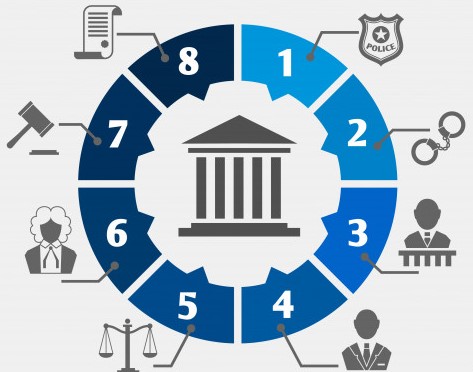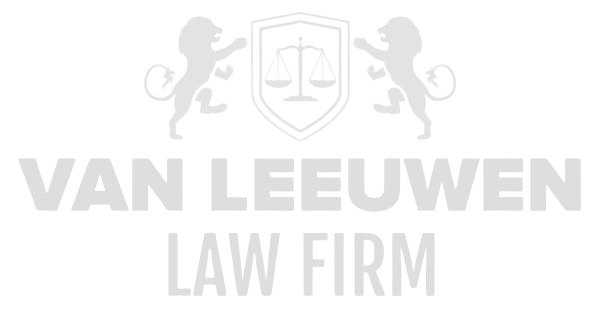External policies and practices form the legal and operational framework that obliges organizations to act in accordance with laws, industry standards, and best practices set by trade associations. These external guidelines range from formal legislative articles and binding regulations to recommendations for information security, quality assurance, and ethical conduct. For international companies, this means not only following local laws but also taking into account additional requirements from multilateral organizations, sanction regimes, and sector-specific regulators. Failure to properly appreciate these external obligations can lead to enforcement measures, fines amounting to millions of euros, and breaches of contract terms with key stakeholders and government agencies.
Organizations confronted with allegations of financial mismanagement, fraud, bribery, money laundering, corruption, or violations of international sanctions see a direct correlation between deficient external policies and a disruption of operational continuity and reputation. Not implementing effective procedures to translate external guidelines into internal processes can open the door to unauthorized data transfers, breaches of privacy regulations, and unintentional complicity in sanction violations. Effective management of these risks requires a proactive approach, continuous monitoring of changing requirements, and a robust audit structure that allows the organization to demonstrably operate in compliance with a dynamic external landscape.
(a) Regulatory Challenges
Organizations must navigate through a maze of national and international legislation—ranging from privacy laws (such as the GDPR) to financial sanction regimes (OFAC, EU sanctions)—where the interpretation of vague terms such as ‘essential services’ and ‘critical infrastructure’ is continuously adjusted by regulators. For multinationals, this requires compliance teams to stay up to date with different jurisdictions, ensuring that local supplements or stricter interpretations of international regulations are promptly translated into updated internal policies.
Implementing standards recommended by external entities, such as ISO 27001, NIST Cybersecurity Framework, or PCI DSS, requires in-depth technical knowledge and process adjustments. Creating accountability dossiers, gap analyses, and roadmap plans must demonstrate that all prescribed controls have been implemented, tested, and evaluated. Regulatory bodies may conduct random audits, and inadequate documentation or deviations in implementation directly result in penalties or operational restrictions.
External breach reporting requirements—accompanied by guidelines from organizations like ENISA or national regulators—require organizations to introduce granularity in incident management processes. Not only must internal escalation and reporting lines be clear, but notification texts for authorities and stakeholders must be prepared in close coordination with legal experts to manage both legal requirements and public relations risks.
Financial sector regulation—think MiFID II, PSD2, and Basel III—introduces additional compliance layers for data management, transaction reporting, and customer identification (KYC). Data-driven reporting systems must aggregate and validate real-time transactions in accordance with external standards, with deviations thoroughly explained and documented. The absence of automated controls can lead to fines, trading restrictions, and reputational damage among market participants.
Finally, industry associations and certifying bodies set additional requirements, such as SOC 2 Type II reports for IT service providers or ISAE 3402 statements for outsourcing providers. These reports often form hard conditions for cooperation with large clients or government agencies. Compliance with these external audits requires investments in tooling, specialized resources, and annual reassessments, necessitating substantial organizational and financial planning.
(b) Operational Challenges
Translating external guidelines into concrete work processes requires that all involved departments, from IT operations to legal and HR, adopt uniform procedures. Change management processes must ensure consistency in patch management, configuration management, and access control in line with external standards. Misalignment between departments leads to gaps in defense, such as out-of-policy configurations or unsecured remote access.
Setting up a comprehensive audit program—integrating both internal and external audits—requires planning, budgeting, and resources. Audit cycles must align with the frequency of external compliance reports, meaning that test plans, evidence collections, and remediation actions must synchronize with deadlines from regulators and industry certifying bodies.
Training and awareness are essential to keep employees alert to changing external requirements. Periodic e-learning modules, workshops, and simulations of audits or data breach scenarios reinforce awareness of new requirements, such as changing sanction lists or additional controls in enhanced industry guidelines. Operationally, it is a challenge to tailor these trainings and track progress accurately for external verification.
Vendor management and supply chain compliance play a central role: operational teams must check whether third-party partners and sub-processors also comply with relevant external standards. Establishing SLAs and contract clauses with mandatory audit rights, security and privacy reports, and escalation procedures requires legal and operational alignment. Failures in supply chain compliance can directly lead to fines and reputational loss, even if the organization’s own systems are fully compliant.
A robust incident response approach, aligned with external reporting requirements, includes predefined workflows for coordination with external stakeholders—such as national CERTs or industry spearheads. Operational teams must use standardized playbooks describing which technical and administrative steps must be followed for each type of incident, including notification to regulators, clients, and supply chain partners.
(c) Analytical Challenges
Integrating external data reporting and monitoring requirements into analytical pipelines requires that data architectures are equipped with flexible schemas and metadata labeling. ETL processes must automatically generate compliance artifacts—such as audit logs, data lineage reports, and reports based on templates prescribed by external entities. Setting up these pipelines requires deep knowledge of both data engineering and the exact specifications of reporting frameworks.
Real-time dashboards for compliance status must combine technical data (such as vulnerability scores and patch levels) with organizational KPIs (e.g., training completion or audit findings). Clustering, normalizing, and contextualizing such heterogeneous datasets demands advanced analytical tools and data model design that meet the data quality requirements set by external regulators.
Threat intelligence analyses must integrate external feeds (such as MITRE ATT&CK, ISACs, and national alerts) into SIEM and SOAR platforms. Configuring enrichment rules and correlation rules to automatically verify external IOCs from these sources requires expertise in data parsing, API integrations, and continuous tuning of detection rules.
Audits of analytical models themselves—such as those for anomaly detection or predictive compliance monitoring—must demonstrate that the algorithms used meet external fairness and transparency criteria. Conducting fairness tests and bias audits, and documenting model performance and validation steps, requires specialized data science skills and a well-documented evaluation framework.
Linking external threat and compliance scenarios to internal risk analysis models requires that risk management systems can retrieve data from both internal registers and public registers (e.g., sanction lists, watchlists). Automating risk scoring based on real-time external feeds and integrating it into risk registers requires seamless integration between IT, security, and risk management platforms.
(d) Strategic Challenges
At the strategic level, organizations must implement a governance layer that systematically monitors and translates external requirements into strategic KPIs and objectives. This includes establishing compliance committees that represent management and regulators, with a mandate to make directive decisions regarding policy changes or investments in tooling.
Investments in compliance technologies—such as GRC platforms (Governance, Risk & Compliance) and advanced analytics engines—require prioritizing budgets and alignment with IT and risk management strategies. Strategic roadmaps must provide phased implementations that synchronize external audit and certification cycles with technology innovation plans.
Collaborations with industry consortia and public forums strengthen the strategic position and provide access to shared threat intelligence, best practices, and joint initiatives for standards development. Participation in standards committees allows organizations to shape future external requirements, enabling proactive compliance.
Managing reputational risks through transparent communication about external compliance efforts—such as annual compliance reports, publication of audit scores, and independent verification statements—can provide a competitive edge and strengthen stakeholder trust. Strategic PR and IR teams should partner with compliance departments to formulate consistent and convincing messages.
Long-term sustainability requires that strategic governance models are adaptive: lessons learned from external audits, market developments, and technological innovations must flow back into policies, tooling, and governance processes cyclically. Ongoing maturity assessments and benchmarking against peers help initiate strategic course corrections in time, keeping the organization agile in an ever-changing external landscape.










